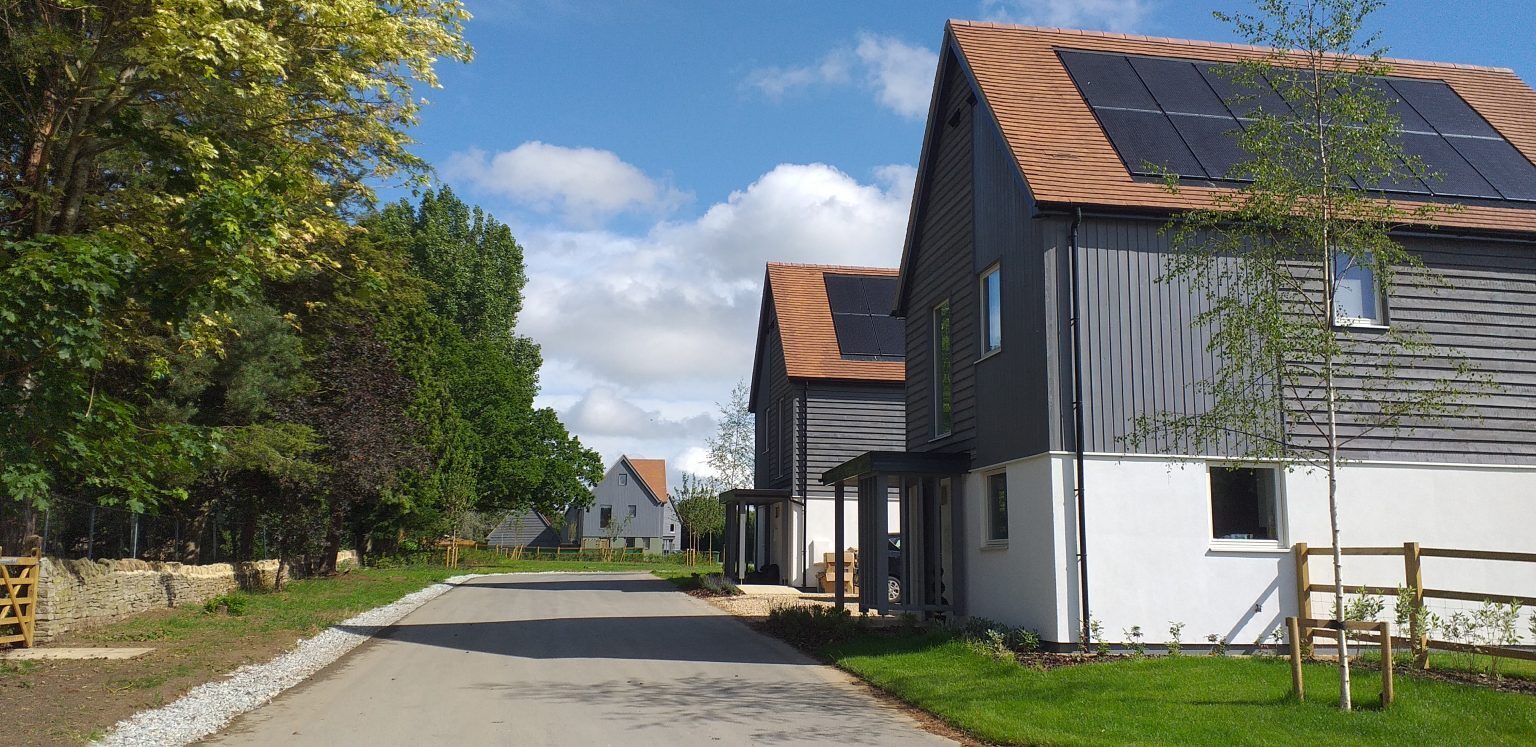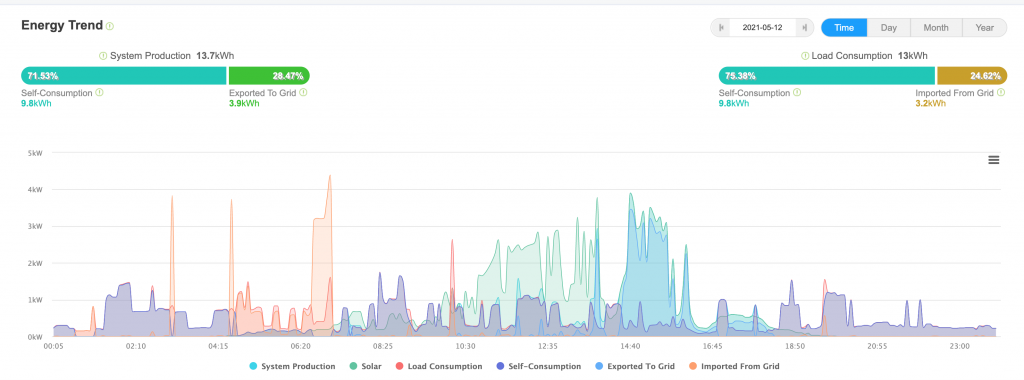
Day in the life of a Wondrwall Energy home
Introduction
The Wondrwall home we are featuring in this article is a 3 bedroom house with 110m2 area. The home has excellent fabric i.e. is very well insulated and has high levels of airtightness meaning lower heating requirements. Equipped with electric underfloor heating (UFH) and a hot water cylinder, this home is running 100% on electricity. The UFH is downstairs only, which suffices to heat the whole home. Wondrwall controls the heating and hot water to ensure that they run either from free, zero-carbon solar electricity or low cost, low carbon off-peak electricity. In addition, the home uses the Wondrwall home energy management system with solar PV panels, battery storage and hybrid inverter.
The solar array on this home isn’t huge compared to some other Wondrwall homes being equipped with 12 panels totalling 3.6KWp. Despite this, the reason the home still performs so well is because the Wondrwall system can intelligently control the heating and hot water to manage the amount and timing of the consumption in conjunction with maximising the use of both self-generated energy from the solar panels and imported off-peak energy from the grid. This whole home approach is what makes Wondrwall so effective.

Fig.1 Wondrwall monitors and analyses data from each home’s solar energy generation and usage. The graph below shows these Wondrwall home’s energy trend over 24 hours.
Data analysis
Data from the graph was taken on Wednesday 12th May 2021 with reasonable weather conditions. On this day, this house was:
- Net Zero i.e. the house generated as much energy from the solar panels as it consumed.
- Zero carbon emissions.
- And best of all, the energy costs were reduced by 88%.
So how did Wondrwall do this?
Wondrwall starts by running the home off the battery using energy left over from the day before, and then off-peak, low carbon energy from the grid. In the early morning (around 3am, 4:30am and mostly at 6:30am) the home pre-charges the battery. The Wondrwall system automatically buys energy at the lowest cost times using a smart import tariff, in this case Octopus Agile. Wondrwall does this automatically based on predicted energy consumption and solar generation for the day using the weather forecast.
At 7am the sun is shining, meaning the solar panels start generating electricity, allowing the home to start running on solar electricity. By 10am, the house is generating sufficient electricity from the solar panels to start charging the battery.
In the afternoon, by 2pm, the battery is fully charged so Wondrwall starts to export electricity back to the grid. On this occasion, more energy was generated from the solar panels than was predicted due to an inaccurate weather forecast that predicted rain but in actuality, it was a sunnier day. The Wondrwall system is designed to err on the side of caution as it is better to charge the battery using off-peak electricity and have solar electricity left over, rather than having too little solar generation and not being able to fully charge the battery resulting in having to import energy at peak times. Wondrwall exports energy to the grid using a Smart Export Guarantee (SEG) tariff, in this case, Outgoing Octopus, to earn money from the electricity that we export back to the grid.
At 6pm Wondrwall stops generating solar electricity and at this point the home starts to run off the battery through the rest of the evening and into the following morning. Although sunset was after 7pm, due to the overcast weather in the early evening, solar generation reduced earlier on this occasion, in comparison to a sunnier day that may see more solar generation a little later on.
As days are warming up, less energy is needed for heating the home. However, analysing data collected from the Wondrwall light switches shows that the homeowners are keeping the home at about 22-23 degrees, which is warmer than the average UK home. With high levels of fabric and low levels of heat loss combined with an outside temperature of 16 degrees, the energy consumption is relatively low though. The energy consumption would be reduced even more if the internal temperature was lowered by a degree or two; this is because, as a rule of thumb, energy consumption for heating is reduced by 10% for every degree reduction in temperature.
Results
In summary, Wondrwall imported 3KWH to charge the battery and run the home in the morning at a cost of 42p. The system also exported 4KWH of electricity to the grid to earn 32p. For the rest of the time, the house was run from the solar generated electricity during the day and from the battery in the evening at zero cost. The total cost for energy with Wondrwall (including a 22p standing charge) equated to £0.32. Without the Wondrwall system, the cost of the energy to run this home on this day would have been £2.69; a £2.37 saving in a single day.
Although this was not a particularly sunny day, even if it turned out better than the forecast, the heating, hot water, lighting and all the appliances including TVs, cooking, washing etc were run almost for free. The performance of the home will continue to improve as we move into summer with higher solar generation and lower energy consumption.
As well as the home owners benefiting from zero energy costs, and the environment benefiting from zero carbon emissions, the national grid also benefits from zero consumption at peak times and higher consumption at off-peak times, helping to balance the grid. Proving that with Wondrwall, intelligent living doesn’t have to cost the earth.